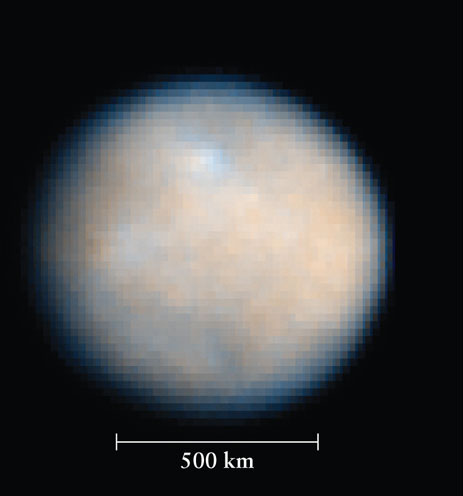
Figure 15-5: RIVUXG
A Hubble Space Telescope View of a Large Asteroid With an equatorial diameter of 974.6 km (605.6 mi), Ceres is the largest of all the asteroids. Its very nearly spherical shape suggests that it was once molten throughout its volume, in which case it probably underwent chemical differentiation like the terrestrial planets (see Box 7-1 and Section 8-5).
A Hubble Space Telescope View of a Large Asteroid With an equatorial diameter of 974.6 km (605.6 mi), Ceres is the largest of all the asteroids. Its very nearly spherical shape suggests that it was once molten throughout its volume, in which case it probably underwent chemical differentiation like the terrestrial planets (see Box 7-1 and Section 8-5).
(NASA; ESA; J. Parker, SwRI; P. Thomas, Cornell U.; L. McFadden, U. of Maryland; and M. Mutchler and Z. Levay, STScI)